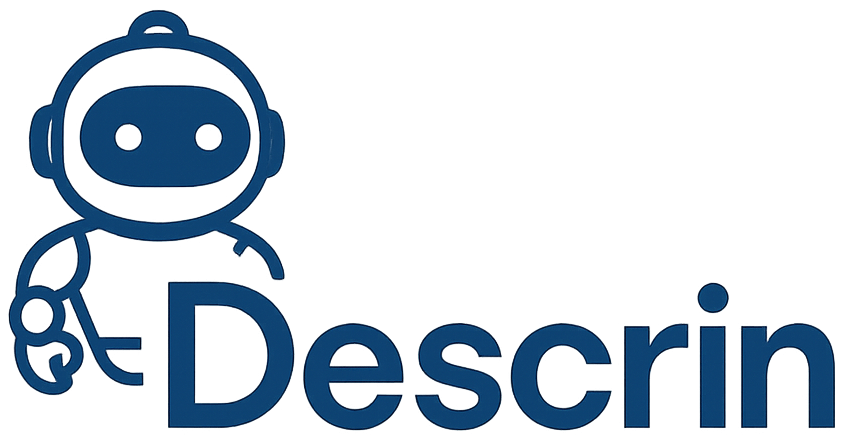How to Write a Full Blog Post in 10 Minutes Using AI
The blank page stared back at me, mocking my creative blocks. As a content creator drowning in deadlines, I found a game-changing solution: AI writing assistants. Learning to write a full blog post in 10 minutes using AI changed my writing from frustrating to phenomenal.
Technology has changed content creation, making it possible to write high-quality articles fast. AI writing assistants are not just tools; they’re partners that help you write compelling content quickly and efficiently.
Imagine cutting your writing time in half while keeping quality high. This guide will show you how to use AI technology to make your content creation faster. What used to take hours can now be done in a quick, strategic session.
Table of Contents
Understanding AI Writing Technology
Blogging with AI has changed how writers create content. This new technology uses artificial intelligence to write in a way that’s both smart and creative. It’s a big leap forward in how we make written content.
Today’s AI writing tools use advanced algorithms to write like humans. They look at lots of data, get the context, and understand the tone and language. This helps them create content that’s not only good but also interesting to read.
Exploring AI Writing Assistant Categories
AI writing tools fall into a few main categories:
- Text Generation Tools: Create full drafts and content pieces
- Content Optimization Platforms: Improve existing text and suggest enhancements
- Specialized Writing Assistants: Focus on specific content types like blogs, marketing copy, or academic writing
When you look into AI for writing, you’ll find tools for all kinds of writing needs. Some are great for quick, short content, while others are better for longer, more detailed articles.
AI writing tech has some cool features:
- It can write fast
- It checks grammar and style
- It can change the tone and voice
- It supports many languages
Using AI for blogging helps writers get past creative blocks. It makes writing faster and better than old ways. This means writers can make top-notch content more easily.
Essential Tools for Quick Blog Writing
To make your blog writing faster, you need top-notch ai for bloggers tools. These tools boost your productivity and creativity. The right digital assistants can change how you write, making it quicker and better.
Writing tools come in different types to help with various parts of blogging:
- Grammar and Editing Tools: Platforms like Grammarly improve your writing with smart tips
- Project Management Solutions: Trello makes organizing your writing tasks and schedules easy
- Distraction Blockers: Freedom app keeps you focused during important writing times
- Note-Taking Platforms: Evernote lets you jot down ideas and research fast
Each tool has its own role in making your writing better. Grammarly fixes small writing mistakes, and Trello tracks your blog post progress. Freedom app helps you write without distractions.
“The right tools can transform a good writer into an exceptional content creator.” – Digital Writing Experts
Using these digital helpers in your writing routine will cut down on time spent writing. Your blog will get better and look more professional.
Preparing Your Content Strategy Before Using AI
Starting a successful AI-powered blog needs careful planning. A good content strategy makes your writing more efficient and focused. Spending time on planning can greatly enhance your blogging efficiency and save time.
Defining Your Target Audience
Knowing your audience is key to creating engaging content. Create a detailed persona that includes:
- Age range and professional background
- Specific interests and pain points
- Online behavior and content consumption preferences
- Primary challenges they seek to resolve
Keyword Research Fundamentals
Good keyword research boosts your content’s visibility. Use tools like Google Keyword Planner or SEMrush to find:
- High-volume search terms in your niche
- Long-tail keywords with lower competition
- Questions your target audience frequently asks
- Semantic variations of primary keywords
Content Goals and Metrics
Set clear, measurable goals for your blog content. Use specific metrics to track performance:
- Engagement rates: Time on page, social shares
- Conversion metrics: Click-through rates, lead generation
- SEO performance: Keyword rankings, organic traffic
With these strategic steps, you’ll lay a solid base for AI-assisted content creation. This approach will bring value and achieve your goals.
How to Write a Full Blog Post in 10 Minutes Using AI

Creating a blog post quickly is now easier with AI tools. Artificial intelligence helps you write faster and better. You can make high-quality content in just minutes.
To write a full blog post in 10 minutes using AI, follow these steps:
- Select an AI writing platform that matches your content needs
- Prepare a clear outline of your blog post topic
- Input specific prompts and guidelines for the AI
- Generate initial draft content
- Review and refine the AI-generated text
For successful AI content creation, give clear instructions. Your AI tool needs clear direction to generate relevant and engaging content. Think of the AI as a writing assistant that speeds up your work.
When using AI to write quickly, remember AI is a tool, not a replacement for your voice. Add your personal insights, check facts, and make sure it fits your brand’s style.
AI writing tools are most effective when guided by human creativity and expertise.
Pro tip: Use a systematic approach to AI content generation. Make templates, prepare detailed guidelines, and always review the content yourself to keep it quality and authentic.
Setting Up Your AI Writing Environment
Creating an efficient AI writing environment is key for bloggers. It helps make content creation faster and more precise. The right tools can change how you blog, making it easier and quicker.
Finding the perfect AI platform is important. You need a tool that fits your writing style, workflow, and professional needs.
Selecting the Optimal AI Platform
When picking an AI writing tool, think about these important factors:
- Compatibility with your writing style
- Range of content types supported
- Customization capabilities
- Integration with existing workflows
- Pricing and scalability
Configuring Your Workspace
Setting up your AI writing environment is more than just picking a platform. Personalization is key to maximizing productivity. Take time to explore settings that let you customize outputs, tone, and content structure.
Creating Reusable Templates
Creating templates can make your AI writing tools more efficient. Make standard structures for different content types like blog posts, product descriptions, or social media content. These templates help keep your content consistent and speed up your writing.
Remember, the right setup can change your blogging workflow. It makes creating content both fun and efficient.
Crafting Effective AI Prompts

Learning to write good prompts is key when using an ai writing assistant. Your success depends on how well you tell the AI what you want.
Creating great prompts needs a smart plan. Think of your AI writing assistant as a partner that needs clear, detailed instructions to do well.
- Start with a clear objective for your content
- Provide context and specific details
- Use precise language and specifications
- Include desired tone and style guidelines
When making prompts for content creation with ai, remember these important points:
- Specify the target audience
- Define the desired content length
- Outline key points to be covered
- Request a specific writing style
Avoid vague instructions that might confuse your ai writing assistant. Instead, break down complex requests into smaller, manageable parts. For example, instead of saying “Write a blog post,” say “Create a 500-word blog post about sustainable technology for tech-savvy millennials.”
The quality of AI-generated content is directly proportional to the clarity and specificity of your prompts.
Keep practicing and trying new things to get better at writing prompts. Every time you use your AI writing tool, you get a chance to improve how you communicate and get more precise, targeted content.
Structuring Your Blog Post with AI
Blogging with AI has changed how we write, making it easier and faster. It offers tools that help bloggers create engaging content. This makes your blog posts more interesting and easier to read.
Creating a good blog post needs planning and creativity. AI tools can turn your ideas into organized content. This content grabs the reader’s attention and keeps them interested.
Creating Compelling Headlines
AI makes it easy to write catchy headlines. Your AI tool can suggest different headlines. These headlines:
- Spark curiosity
- Highlight key benefits
- Incorporate targeted keywords
- Match your brand’s tone
Organizing Content Flow
AI helps bloggers arrange their content in a logical way. It analyzes your topic and audience. Then, it suggests the best structure for your content, making it:
- Easy to follow
- Engaging
- Clear
Seamless Transition Techniques
Transitions are key to keeping readers interested. AI tools can create natural connecting phrases. These phrases link your sections smoothly, making your blog post flow well.
AI doesn’t replace creative writing—it amplifies your unique voice and storytelling capabilities.
Enhancing AI-Generated Content

AI copywriting has changed how we create content. But, drafts from AI need a lot of work. Your skills turn raw AI text into stories that really connect with readers.
To make AI copywriting work, you need a smart editing plan. You should focus on a few key areas:
- Inject your unique professional voice
- Add industry-specific insights and personal experiences
- Verify factual accuracy and current information
- Align content with your brand’s specific tone
Good blogging isn’t just fast. It’s about making quality, real content that grabs your audience. Think of AI as your first draft helper, not your last editor.
“AI generates content, but human creativity transforms it into meaningful communication.”
Here are some key steps to refine AI content:
- Review for coherence and logical flow
- Integrate specific industry examples
- Ensure technical accuracy
- Adjust language to match your brand voice
Your aim is to make AI content unique and engaging. It should show off your expertise and talk directly to your audience.
Optimizing Your Blog Post for SEO
AI has changed blogging by making SEO easier. It gives us tools to boost our blog’s visibility. Knowing how to use these tools can really help your blog rank better.
Search engines love high-quality, relevant content. When using AI tools, focus on making content that truly helps your readers.
Implementing Keywords Naturally
Putting keywords in the right places is key. Here are some tips for using AI tools:
- Use primary keywords in the first 100 words
- Include variations of target keywords
- Maintain a natural, conversational tone
- Distribute keywords proportionally throughout content
Crafting Compelling Meta Elements
Your meta description and title tags grab search engine attention. Make them short, engaging, and true to your content.
| Meta Element | Best Practices |
|---|---|
| Title Tag | 50-60 characters, include primary keyword |
| Meta Description | 150-160 characters, compelling summary |
Strategic Internal Linking
Internal links help search engines understand your site better. They also make it easier for users to find what they need. Use descriptive anchor text when linking to related articles.
“Smart internal linking creates a web of relevance that boosts overall site authority.” – SEO Experts
Using AI and smart SEO together makes your blog posts great for both readers and search engines.
Quality Control and Human Touch
AI writing tools have changed how we create content. But, they can’t replace the skill and touch of a human. As a content creator, you’re key in making AI text your own.
To keep your content top-notch, use a quality control process. Here are some steps to follow:
- Check if the AI facts are right
- Add your own voice and views
- Make sure it fits the context
- Get rid of boring or repeated words
Creating content with AI is about finding the right mix of tech and human touch. AI gives you a solid base, but your insights make the text come alive.
Here’s how to review your work:
- Read the whole draft carefully
- Take out parts that don’t add much
- Include your own stories or examples
- Make sure it sounds like your brand
Your skills make AI content special. While tools speed up writing, they can’t match your deep understanding and feeling.
Publishing and Distribution Strategy
Blogging with AI changes how you share your content. It helps you create a smooth workflow that boosts your online presence. Using time-saving blogging techniques is key to a good distribution plan.
Your AI-made content needs a smart way to reach the right people. Scheduling tools are vital for keeping your content flow steady. They help you plan and automate posts on various platforms.
- Select social media platforms that align with your target audience
- Create a content calendar using AI-powered scheduling tools
- Develop a cross-platform distribution strategy
Sharing your blog on different digital spots can increase its visibility. Strategic content distribution means knowing where your audience is and tailoring your strategy for them.
| Distribution Channel | Potential Reach | Engagement Rate |
|---|---|---|
| High Professional Audience | Medium-High | |
| Broad Audience | High | |
| Medium | Content-Focused Readers | High |
Use AI tools to see how your content is doing and tweak your strategy. By looking at metrics and engagement, you can make your blog more visible and impactful.
Conclusion
Learning to write a full blog post in 10 minutes with AI is a game-changer for content creators. The digital world keeps changing, and AI tools give bloggers new ways to write faster and better.
AI doesn’t replace human creativity; it boosts it. These tools can start drafts, help with writer’s block, and make content quickly. With AI, you can spend more time making your writing unique and engaging.
Your blogging journey doesn’t stop with AI. Use these tools to help you, then add your own touch. Try out different AI tools, get better at writing prompts, and learn how to use them in your work.
As the digital world changes, being open to new tools will make you stand out. See AI as a partner in your blogging, and watch your work get better and more impactful.



